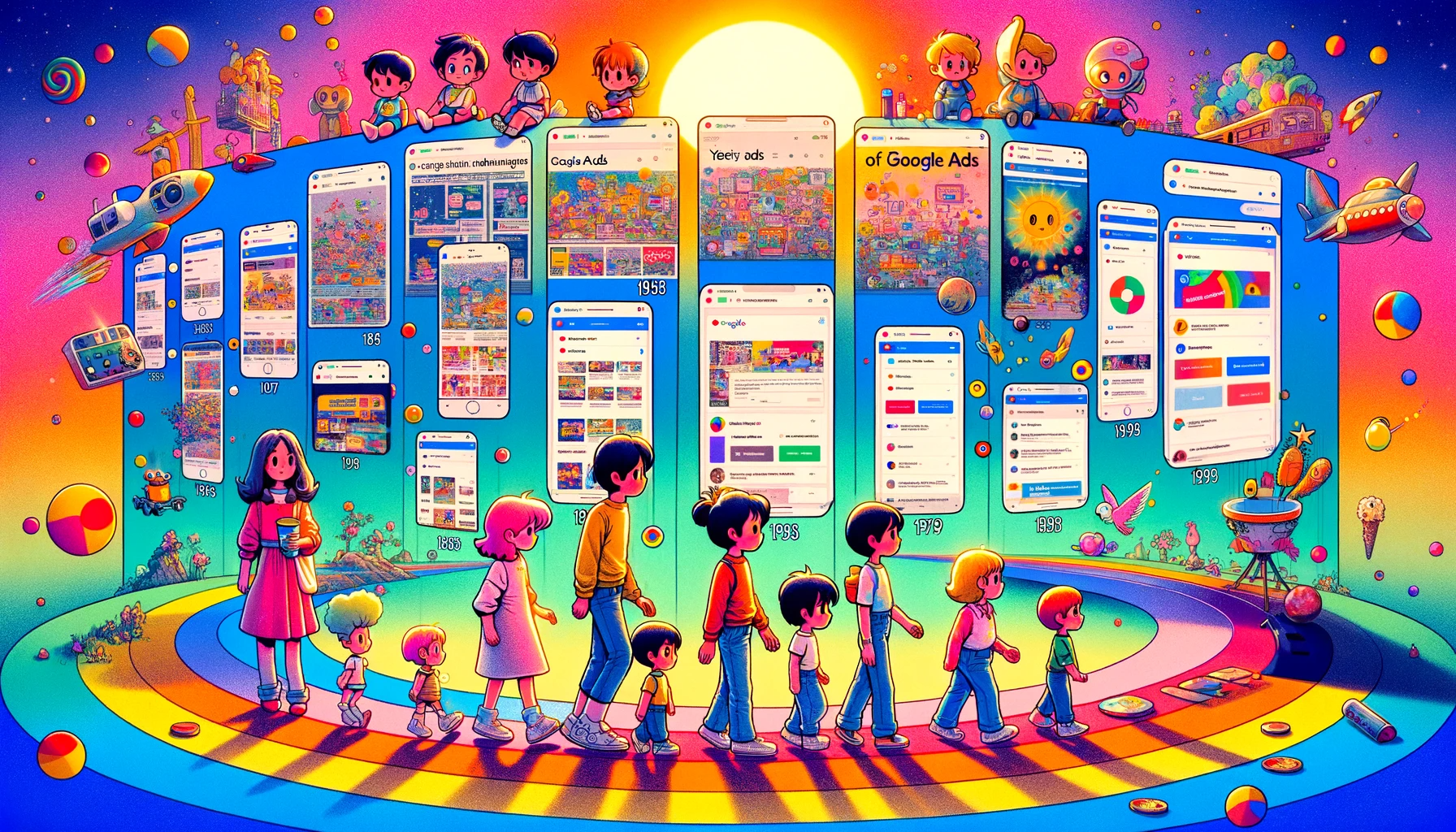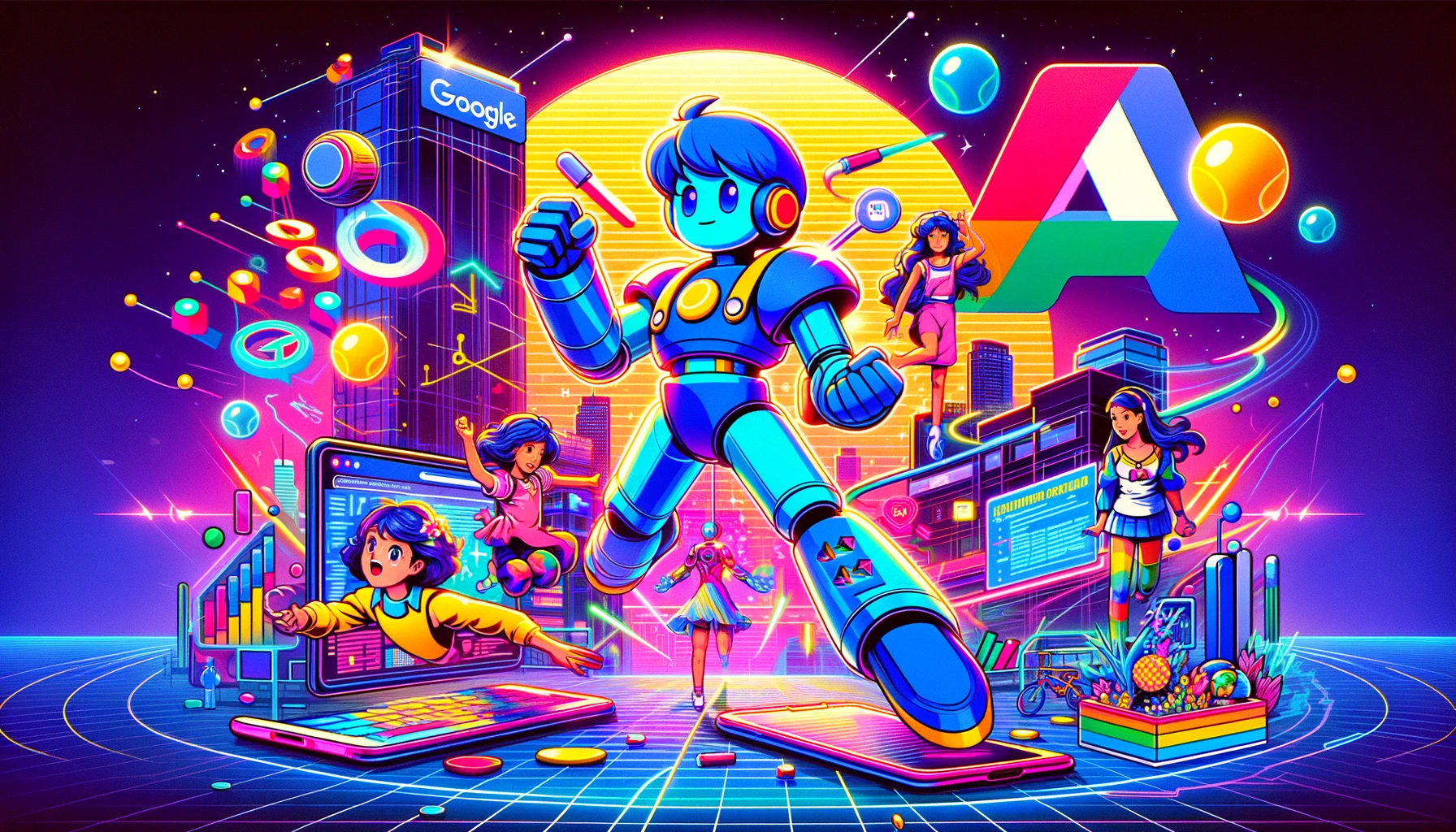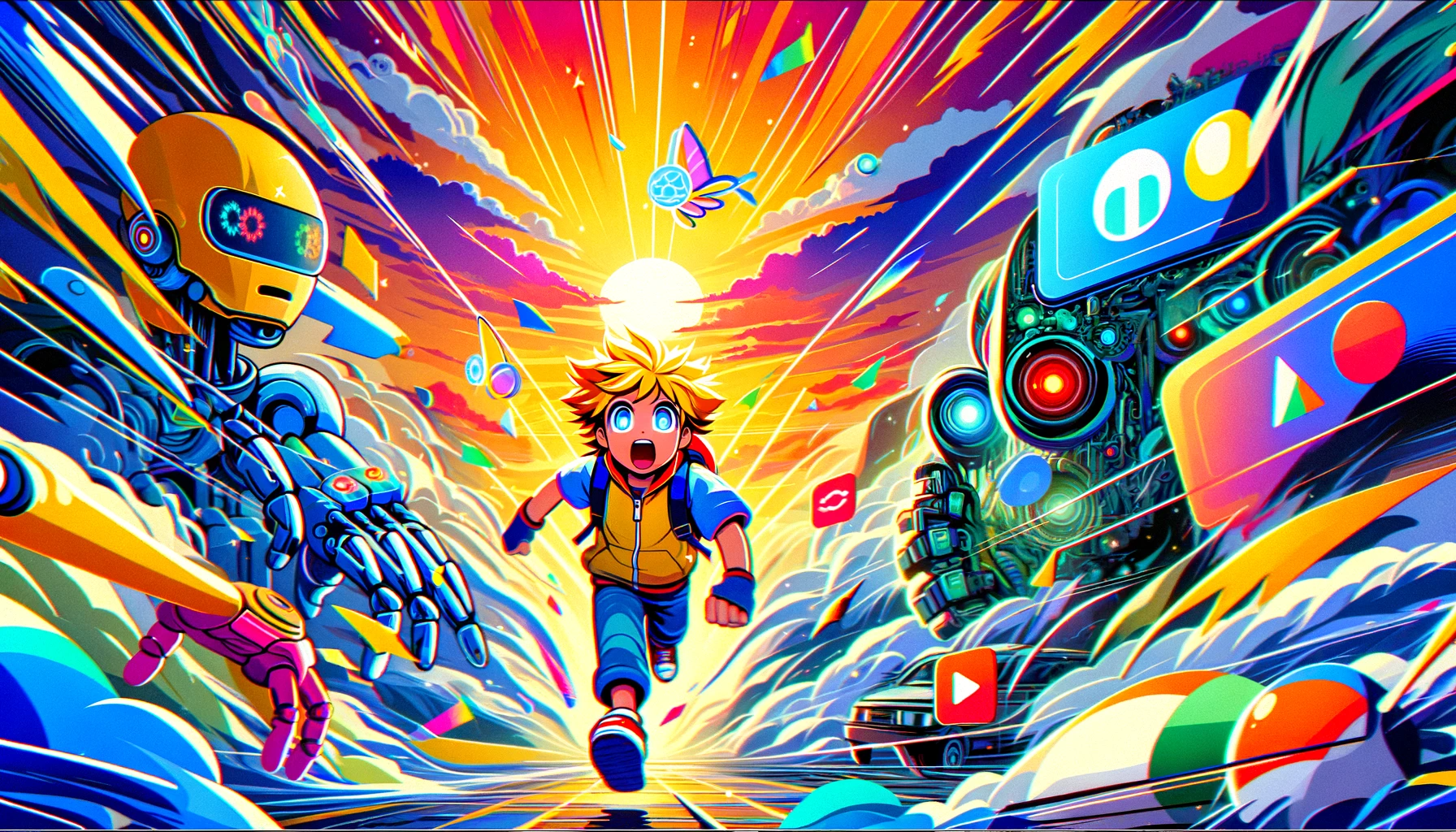As we navigate through 2023, it’s worth noting that Google Ads has been with us for 23 years. Granted, I’ve only been with it for roughly 17 of those, but the journey has been nothing short of a tech saga – evolving, adapting, and often leaving us scrambling to keep up with its ever-changing interface. From its early days of straightforward text ads, Google Ads has now become a complex, AI-driven platform that reshapes our connections across platforms like YouTube, Gmail, and more.
The Advent of Demand Gen
Just recently, we’ve seen the introduction of Demand Gen, a new campaign type that promises to revolutionise our advertising strategies. While it offers broader reach and engagement, it also poses questions about the effectiveness and quality of these leads. But let’s not forget, the essence of Google Ads has always been about change and adaptation.

Reflecting on the numbers, we see that in 2022, global spending in search advertising reached an astounding 164.6 billion U.S. dollars. Considering Google’s dominance, it’s safe to assume a significant portion of this was funnelled through Google Ads. What’s more, projections suggest an increase to about 190.5 billion by 2024. These numbers highlight not just the growing reliance on digital ads but also the immense responsibility on platforms like Google Ads to deliver value.
The Challenge of Balancing Reach and Results
However, it’s essential to remember that it’s not just about pouring money into digital campaigns. The real challenge lies in balancing the reach of our campaigns against the tangible results they deliver. As we’ve seen shifts towards more visually driven advertising, each change has brought its own set of challenges and opportunities.
Evolving with Google Ads
As Google Ads continues to evolve, it becomes a critical part of our digital marketing ecosystem. The real question now is: how effectively are we utilising this behemoth in our marketing strategies? Are we simply chasing numbers, or are we crafting campaigns that resonate with our audience? Unfortunately, in most cases, it tends to be the former rather than the latter.

The introduction of newer campaign types like Demand Gen has definitely stirred the pot, offering innovative ways to engage with audiences. Yet, it’s crucial to assess their real impact. Are these new campaigns driving meaningful engagement or just superficial numbers? As marketers, it’s our job to decipher these trends and align them with our broader marketing goals.
Adapting to Constant Updates
Another aspect to consider is the constant updates and changes to the platform. While these updates are aimed at improving the platform, they often result in a steep learning curve. Advertisers and marketers find themselves continuously adapting to new features and interfaces, which can be both challenging and time-consuming.
AI-Driven Advertising: A Balancing Act
Moreover, the shift towards AI-driven advertising raises questions about the balance between automation and human insight. While AI offers efficiency and scalability, it’s vital to maintain a level of human involvement to ensure that campaigns remain relevant and engaging.

Looking back over the years, it’s clear that Google Ads has profoundly influenced our marketing approaches. Its evolution from simple text ads to a complex, AI-driven platform reflects the dynamic nature of digital marketing. Yet, the core objective remains the same – to connect with audiences in the most effective way possible.
Reflecting on Our Use of Google Ads
As we stand at this juncture, it’s essential to reflect on our relationship with Google Ads. Are we adapting to its changes in a way that enhances our marketing strategies? Are we leveraging the full potential of the platform to create campaigns that not only drive traffic but also build meaningful engagement?
As we continue to navigate through the ever-changing landscape of digital advertising, let’s remain thoughtful and strategic in our use of Google Ads. It’s about striking the right balance between embracing new technologies and maintaining the essence of what makes advertising effective – connecting with people.
I’m keen to hear your thoughts. How has Google Ads influenced your marketing approaches over the years? Are you seeing the value in these newer campaign types? How has your opinion changed on the system over the years?
Looking forward to your insights and experiences with Google Ads. Let’s continue to learn, adapt, and grow in this ever-evolving digital world.
See you next time!
Leave a Reply